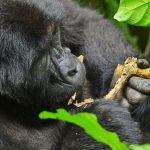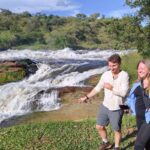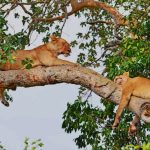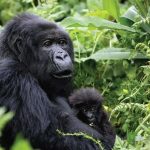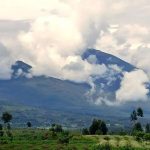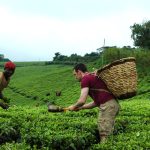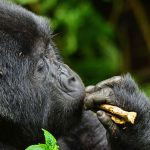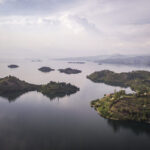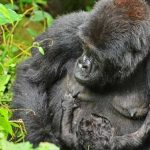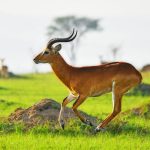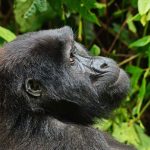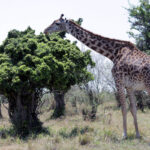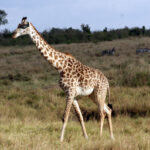Where is the Masai Mara National Reserve Located?
Where is the Masai Mara National Reserve Located? The Masai Mara National Reserve is one of the most renowned and iconic wildlife reserves in the world. Situated in the southwestern part of Kenya, it forms part of the larger Mara-Serengeti Ecosystem, which spans across both Kenya and Tanzania. The reserve is named after the Maasai people, an indigenous community who live in the region, and the Mara River, which runs through the reserve, helping to shape the landscape and ecosystem. Covering an area of about 1,510 square kilometers (583 square miles), the Masai Mara is part of a broader landscape that includes neighboring conservation areas, such as the Ngorongoro Conservation Area and the Serengeti National Park.
Geographical Location of the Masai Mara National Reserve
The Masai Mara National Reserve lies within Narok County, which is located in the Rift Valley Province of Kenya. Geographically, it is positioned at an altitude ranging from about 1,500 meters (4,900 feet) to 2,170 meters (7,120 feet) above sea level, making it a highland plateau. It lies between the coordinates 1°25’S 35°00’E to 1°40’S 35°15’E. The reserve is bordered by several notable geographical landmarks, such as the Great Rift Valley, which runs through the eastern part of the country, creating a stunning backdrop to the reserve’s plains and rolling hills.
One of the defining geographical features of the Masai Mara is its position adjacent to the Serengeti National Park in Tanzania to the south. The Mara and Serengeti together form a continuous migratory route for the great wildebeest migration, which is one of the world’s most spectacular wildlife events. This unique location places the Masai Mara at the center of an important and biodiverse ecosystem that attracts millions of visitors every year, as well as an extensive array of wildlife species.
Accessibility and Transportation to the Masai Mara
Getting to the Masai Mara National Reserve can be done by several means of transportation, making it accessible to a wide range of tourists from across the globe. The most common routes are via road and air.
By Road:
The Masai Mara is approximately 270 kilometers (170 miles) southwest of Nairobi, the capital city of Kenya. The drive typically takes around 5 to 6 hours, depending on traffic and road conditions. The journey from Nairobi is scenic, passing through lush agricultural landscapes, local villages, and picturesque countryside. Tourists traveling by road can enter through different gates such as Sekenani Gate, Ololaimutiek Gate, and Talek Gate. However, the roads leading to the reserve can be rough and unpaved, especially during the rainy season, so visitors are encouraged to use 4×4 vehicles for easier navigation.
By Air:
For a quicker and more convenient journey, many tourists prefer to take flights from Nairobi’s Wilson Airport to the several airstrips within or near the reserve. These airstrips are serviced by local airlines offering daily flights to destinations such as Keekorok Airstrip, Mara Serena Airstrip, and Olkiombo Airstrip. Flights generally take around 45 minutes to an hour, offering passengers breathtaking aerial views of the Mara’s plains and the surrounding wildlife.
Climate and Ecosystem of the Masai Mara
The Masai Mara’s climate is classified as semi-arid, with two primary seasons: a wet season and a dry season. The dry season typically lasts from June to October, which coincides with the period of the annual wildebeest migration, making this the most popular time for tourists to visit. During the wet season, from November to May, the reserve experiences significant rainfall, especially in April and May, which makes the ecosystem lush and green.
This climate supports a rich ecosystem that is home to an impressive variety of flora and fauna. The Masai Mara’s landscape features grasslands, acacia woodlands, riverine forests, and swamps. The Mara River, which is the main water source in the area, is vital for sustaining the wildlife and the vegetation. It is also the site of one of the most dramatic events during the wildebeest migration: the wildebeest river crossing. This river also hosts crocodiles and hippos, adding to the diversity of the area.
Wildlife and Conservation Efforts in the Masai Mara
The Masai Mara National Reserve is globally recognized for its unparalleled wildlife, including the “Big Five”—lion, leopard, elephant, buffalo, and rhinoceros—as well as other species such as cheetahs, hyenas, giraffes, zebras, and more than 450 species of birds. The reserve is perhaps most famous for hosting the Great Wildebeest Migration, which sees over 1.5 million wildebeests, along with hundreds of thousands of zebras and gazelles, migrate from the Serengeti in Tanzania to the Masai Mara in Kenya every year.
The migration is a breathtaking spectacle of survival, with predators like lions, leopards, and cheetahs often preying on the migrating animals. This natural event takes place between July and October, drawing visitors from all over the world to witness this dramatic display of nature’s cycles.
In terms of conservation, the Masai Mara is managed by a collaboration between the local Maasai community and the Kenya Wildlife Service (KWS). The Maasai people, who have lived in the region for centuries, are actively involved in preserving the reserve’s ecosystem through community-based conservation efforts. The area is also protected by National Reserve status, which ensures that tourism is regulated and managed sustainably.
Conclusion
Located in the southwestern part of Kenya, the Masai Mara National Reserve is a global treasure for its biodiversity and natural beauty. It serves as a sanctuary for an extraordinary range of wildlife, as well as a destination for nature lovers and adventure enthusiasts from around the world. Whether you are drawn to its diverse ecosystems, the mesmerizing spectacle of the great migration, or its rich Maasai culture, the Masai Mara offers an experience that is both unforgettable and deeply connected to the land.
Popular East Africa Safari Packages
- Gorilla Trekking & Masai Mara Safari – 8 Days
- Murchison Falls Luxury Wildlife Safari – 4 Days
- Ultimate Uganda Luxury Safari – 14 Days
- Uganda Wildlife Safari & Activity Holiday – 15 Days
- Wildlife & Primates Safari in Uganda – 9 Days
- 3 Days Rwanda Gorilla Trekking Safari
- Best of Rwanda Budget Safari – 6 Days
- Uganda & Rwanda Activity Holiday – 8 Days
- Uganda & Rwanda Wildlife Holiday – 20 Days.
- 4 Days Gorilla & Chimp Tracking Safari
- Classic Rwanda Safari – 10 Days
- Wildlife & Gorilla Trekking Holiday – 9 Day
- Group Adventure Holiday – 7 Days
- Uganda Wildlife Holiday – 8 Days
- Luxury Gorilla Tracking Safari By Road – 4 Days
- All-Inclusive Uganda Family Safari – 12 Days.
- Ngorongoro Crater & Lake Manyara Safari – 4 Days
- Eastern Uganda Safari Trail – 12 Days
- Grand East Africa Safari – 20 Days. Uganda, Kenya & Tanzania
- A Glimpse of Kenya Wildlife Safari – 5 Days

